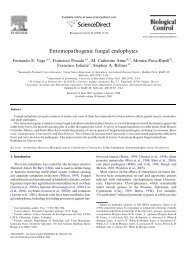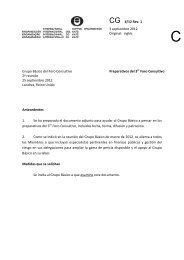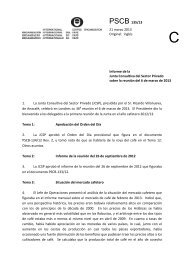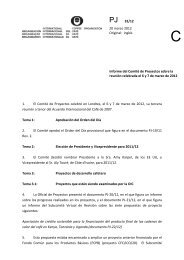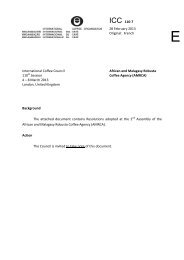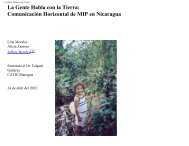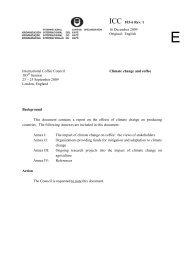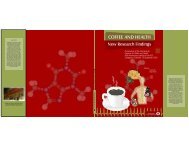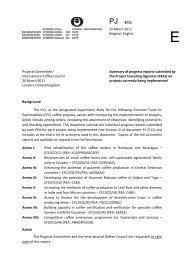Devouring profit - International Coffee Organization
Devouring profit - International Coffee Organization
Devouring profit - International Coffee Organization
You also want an ePaper? Increase the reach of your titles
YUMPU automatically turns print PDFs into web optimized ePapers that Google loves.
94<br />
Analysing Figure 20, we see that income can vary substantially among these three<br />
types of production. For instance, in January the gross income per hectare is about<br />
US$580 for the highest technology but it is barely above US$100 in the subsistence<br />
group. It is clear that at least during May, June, July and August there is no income<br />
derived from coffee which could adversely affect any investment in crops or any other<br />
enterprise during that period. Also, pest management may be limited due to lack of<br />
money just at a phase of the crop cycle when it is most needed. The subsistence<br />
group seems to be very vulnerable during this period.<br />
Pests and diseases, - farmers’ perceptions: the Mexican <strong>Coffee</strong> Council (2000)<br />
carried out a survey among coffee producers. One of the topics analysed was pest and<br />
disease management. Table 36 describes the main control strategies used and the<br />
percentage of farmers involved in each of them.<br />
Table 36. Main control strategy used against pests &<br />
diseases.<br />
Table 36 shows that the two main strategies used against pest and diseases are cultural<br />
control and no control. This circumstance could have several explanations. Firstly, coffee<br />
farmers might lack information about pest and disease management. Secondly, the<br />
control measures proposed might not work properly so they have not adopted them,<br />
or conversely that they see no economic advantage in using them, or that they have<br />
insufficient resources to carry out the control measures (Norton & Mumford, 1993).<br />
More research is needed to understand what is happening here but it may be related<br />
to the almost total absence of extension support.<br />
Research carried out in Chiapas by Jiménez (1999) found that coffee farmers considered<br />
that the most important phytosanitary problems were coffee leaf rust (Hemileia<br />
vastatrix) for 87% of farmers and CBB (Hypothenemus hampei) for 92% of them. Thus<br />
the CFC-ICO/02 project focused on a key sanitary problem for Mexican coffee farmers.<br />
Colombian coffee growers<br />
Socio-economic description: the following comes from the study carried out by Duque<br />
et al., (2000) on technology adoption of IPM strategy by Colombian coffee farmers,<br />
13% of whom were women whilst 87% were men. The majority were owner farmers<br />
(66%) most of the rest were managers (29%).




